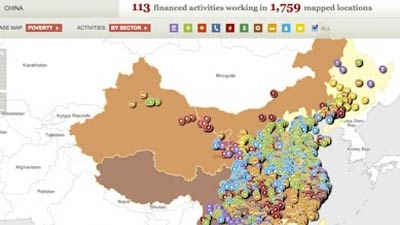Challenge
Land degradation was one of the main environmental problems facing China in early 2000s. Land degradation and erosion were caused by unsustainable land management practices and, at the same time, were threatening the livelihood of millions of mainly poor people in rural China. The problems were most severe in the upper watersheds of the Changjiang and Pearl Rivers.
The Changjiang River Basin alone covered a total eroded area of 562,000 square kilometers, about 36 percent of the national total, and the induced soil loss amounted to about 2.4 billion tons annually.
The impacts of degradation ranged from a loss of vegetation, biomass and biodiversity, and a reduction in soil water storage capacity to an irreversible destruction of farmland, damaging floods downstream, and climate change at a regional scale.
In addition, these areas suffered from the greatest social costs of the degradation. The exploitation of forest resources and growth in agricultural production driven by the need to generate income had diminished natural resources basis and accelerated the erosion of farmland, limiting agricultural and livelihood development options.
Solution
The project sought to introduce an integrated approach to watershed rehabilitation and management by building on the Bank’s and the European Commission’s (EC) experience in sustainable watershed management. It also sought to improve the rural business environment and help the country accelerate its transition to a market economy by encouraging active participation of the private sector.
The project financed public goods investments for soil and water conservation, including stone-faced terraces, sediment retention structures, afforestation and restoration of vegetative cover, and village infrastructure such as drinking water supply systems and access roads.
In addition, the project supported investments to improve the farmer’s income, including terracing of slope land to increase crop production, high value fruit and nut tree orchards, grasslands to improve fodder production and reduce soil erosion, livestock development, irrigation facilities, small-scale tanks and cisterns, and energy-saving stoves and small-scale bio-gas digesters to reduce forest destruction and household spending for fuel.
The project was implemented in three provinces of Guizhou, Hubei, and Yunnan and Chongqing Municipality and promoted participatory approach in the project design, management and implementation process.

